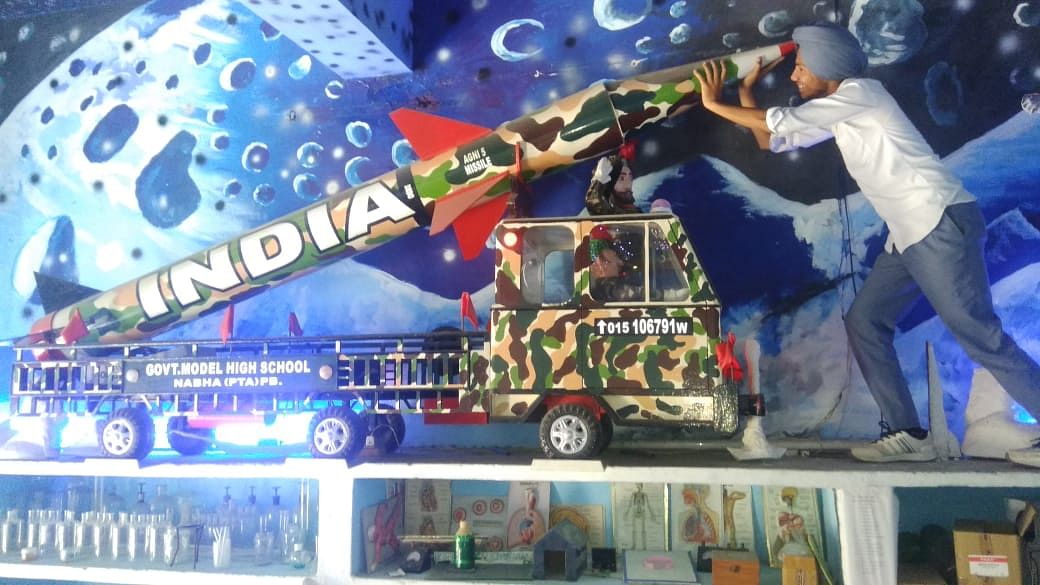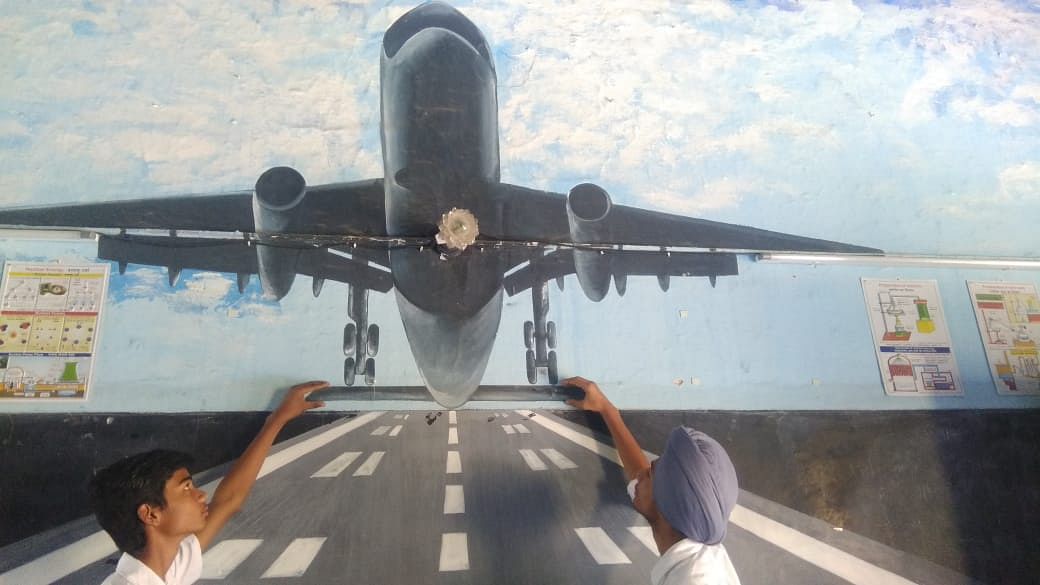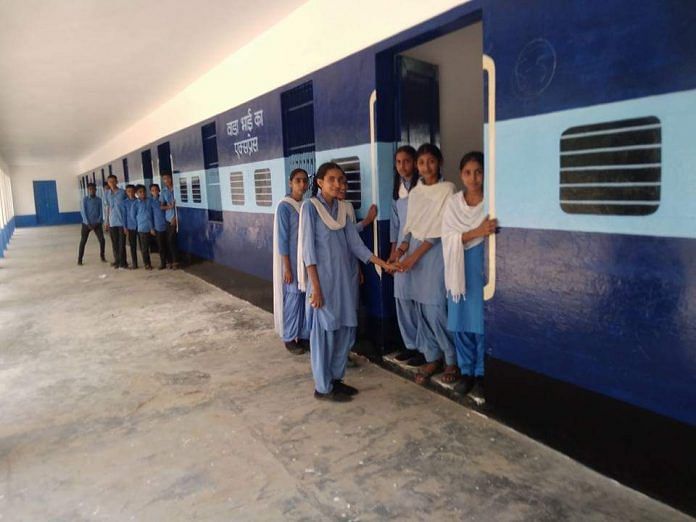Through the BaLA programme, teachers and students have transformed over 400 government school buildings in Punjab into vibrant learning spaces.
Chandigarh: If you travel in Punjab, there’s a good chance you’ll come across government school buildings painted in vibrant colours of the rainbow.
Schools like this dot almost the entire state, from Jaito in Faridkot to Mohali in Chandigarh’s backyard.
The buildings have been transformed from the usual ‘sarkaari’ pale yellow bricks and mortar to lively spaces attracting the most uninterested of students under the ‘BaLA’ programme.
What is BaLA?
BaLA stands for ‘Building as Learning Aid’.
It is a ‘do-it-yourself’ venture by the state education department, under which the buildings are given makeovers voluntarily by school teachers, using funds gathered from the community as donations. The government has not spent a single paisa on any of the over 400 school buildings that have been transformed so far.
“The target is to have 4,250 such schools across the state by the end of March 2019. Almost every day, we get completion pictures from at least one school. It’s a silent revolution sweeping across Punjab,” said Rajinder Singh, spokesperson for the education department.
Krishan Kumar, principal secretary for school education, added: “The idea behind the whole exercise is to promote the concept of using buildings as learning aids. A school should be a friendly and welcoming space for the student. What is painted on the walls can make all the difference and have a lasting impression on the child’s mind.”
BaLA as a concept has been used in other states, but is new to Punjab.
“It was started in a small way almost 10 years ago, but the effort was limited to painting a calendar or quotations on school walls,” said Amarjeet Singh Ralli, state coordinator for BaLA in Punjab, who teaches at a senior secondary smart school at Boha in Mansa.
“School buildings are rarely looked upon as a learning environment. We are trying to change that and use the school space — walls, corridors and playgrounds — as resources in the learning process. In a village, the school becomes the most beautiful place to be in,” said Krishan Kumar

Also read: CBSE schools could lose affiliation if they pick textbooks with ‘objectionable content’
What’s on the walls
External walls are adorned with alphabets, numbers, multiplication tables, maps and fruits. Even the classroom walls and roofs bear stars, the solar system and cartoons.
In schools with higher classes, tough mathematical concepts like trigonometry, geometry, pie charts and fractions too are explained on the walls. More complicated biological systems are also painted or modelled using walls. Short stories of the lives Punjab’s historical figures are also depicted.

“The school is a three-dimensional space, and if we are able to use it well, it can give a multiple sensory experience to the student. Students respond so well to colours and drawings. Their observation skills improve and retention increases,” Ralli said.
Gurpreet Singh Namdhari, art teacher at a government senior secondary school in Nabha, Patiala, said: “There is sometimes just enough money to buy the paints. In our school, we and the students have painted the walls ourselves. It took us three months to create the science city room. The school has an art gallery too.”
Major donors
Among the major donors to BaLA are non-resident Punjabis who are more than willing to contribute to the schools in their native villages.
“In return, they get to see their name — or the name of the person they donated the amount on behalf of — on a simple flex board in the school premises. It’s the same way you see names of donors written on the walls of temples and gurudwaras,” said Rajinder Singh of the education department.
“Once the funds are in place, the teachers let their imagination run. Some teachers choose to work with a theme or a subject in mind and fill up the school walls with learning material about that.”
A government senior secondary school in Wara Bhai Ka village in Jaito, Faridkot, has seven rooms, all of which have been painted to look like a train. The classroom coaches are numbered S1 to S7.
The idea behind the ‘train’ was to encourage students to move ahead in life and keep moving till their goals are met, and was given by Ralli, who was then a primary school teacher. Once the idea became popular, it was copied in many other schools, and is now called ‘Education Express’.
Playgrounds get makeovers too
School playgrounds are also being beautified. “The playgrounds have colourful dustbins, usually made out of waste drums. If we have a donor willing to install swings, we welcome that,” said Rajinder Singh.
The playgrounds are, in fact, an extension of the school walls. Installations have been set up to teach shapes as well as the concepts of area and volume. Schools in Moga and Barnala have created ‘math parks’ in a portion of the playground.
“We have encouraged teachers to ensure that the school is as green as possible. There should be shade for the children to sit in,” Rajinder Singh added.
Also read: Muslim girls less likely to drop out of school than boys at higher education level
More to come
Right now, in most schools, the focus is on the walls and playgrounds. But teachers are being encouraged to use other elements as learning aides — the floor, windows, doors, fans, trees and flowers.
“A flag-pole can be erected in the ground to demonstrate the sun’s movement, three-dimensional shapes to understand the concept of a sphere, square, cube etc. Window grills can be used to teach fractions, doors to show various angles,” said Ralli.
“The whole idea is to innovate from whatever is available in the school, even by labelling all the items in three languages — English, Hindi, Punjabi.
“We recently started floor activities to develop mind and limb coordination among the younger children. Step counting, shapes, addition and subtraction, and multiplication tables can be taught using the floor.”



